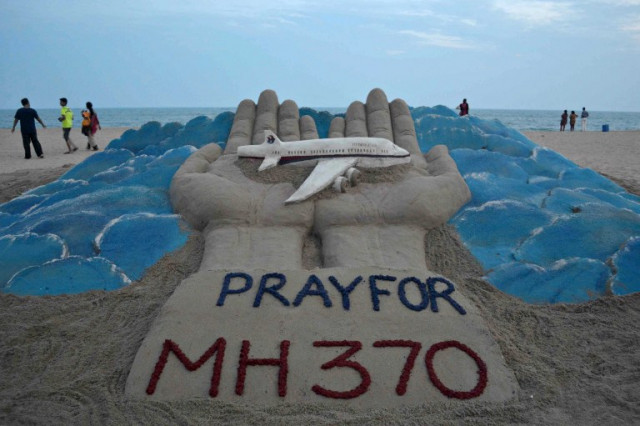Search for MH370 to enter new phase
Two specialist ships will join the hunt

MH370 disappeared en route from Kuala Lumpur to Beijing on March 8 with 239 people onboard and no trace of the Boeing 777-200 has been found despite a massive air, sea and underwater search.
Authorities have since used technical data to focus the search in the southern Indian Ocean far west of Western Australia along the thin, long arc from which the plane emitted its last satellite "handshake".
Australia has been spearheading the hunt for the plane, which is believed to have come down after mysteriously diverting off-course, leaving search teams with a dauntingly vast task that has been beset by false leads and initial confusion - to the continued frustration of grieving relatives.
The latest phase to begin in early October will see two ships - Fugro Discovery and Malaysian-contracted GO Phoenix - send sophisticated sonar systems some 5,000 metres below sea level to search the ocean floor using sound waves, the Australian Transport Safety Bureau (ATSB) said.
The systems, attached to the ships by tow cables up to 10 kilometres long, have been programmed to detect the biggest parts of the aircraft that are likely to be in one piece, such as engines, landing gear and fuselage, the ATSB's Peter Foley said.
If "abnormalities" are detected, the ships will return to those areas and pilot the vehicles "slower and lower", using cameras to look at the sea bed, said Foley who is in charge of search operations.
Foley said he was "cautiously optimistic" the underwater probe would be successful, but he acknowledged the "very challenging" conditions faced by the search teams at the remote and largely unexplored location.
On the surface, the ships and their crew operate in cold, windy conditions and on rough seas with waves as high as 12 metres.
Underwater, the searchers are discovering new features in a varied terrain previously mapped with coarser resolution using limited satellite data.
"Given the area that we are going to need to potentially search, it's an extraordinary challenge," Foley said.
The new phase follows the mapping of some 110,000 square kilometres of the remote area's vast sea floor since May - by Chinese survey ship Zhu Kezhen and the Australian-contracted Fugro Equator.
With the search zone cutting across Broken Ridge - a mountainous sea floor structure formed by spreading plate margins - the three-dimensional maps produced from the survey by Geoscience Australia have revealed an underwater world of volcanoes, ridges and deep trenches.
The changes in height, with ridges up to 300 metres high and trenches some 1,400 metres deep, point to the tough job ahead. But the data could also inform other research after the underwater probe is concluded.
"What it is giving us is some background on the evolution of the continental plates that exist in this area, the geology of the sea floor... and it gives us places to look at in future for biological communities," Stuart Minchin, from Geoscience Australia, told AFP.
"Having this kind of information about the sea floor also impacts our modelling of ocean currents and provides some background information for potential tsunami impact modelling down the track," added Minchin.
He said the mapping had identified new features, including a ridge six kilometres wide, 15 kilometres long and nearly 2,000 metres above the sea floor, as well as two volcanoes and seamounts, which are remnants of volcanoes.
The ATSB said on September 24 that further refinement of communications and flight data from MH370 would be used to determine the first areas to be scoured by the ships, "which will most likely extend south" of the previous priority zone.
The team has also hired a sonar specialist who worked with Air France AF447's recovery team after that plane crashed in the Atlantic Ocean in 2009, with many similar challenges - such as water depth and terrain - in the searches, Foley said.
"We are totally focused on finding that aircraft and we've got really expert help, so optimism is high," he said.



















COMMENTS
Comments are moderated and generally will be posted if they are on-topic and not abusive.
For more information, please see our Comments FAQ